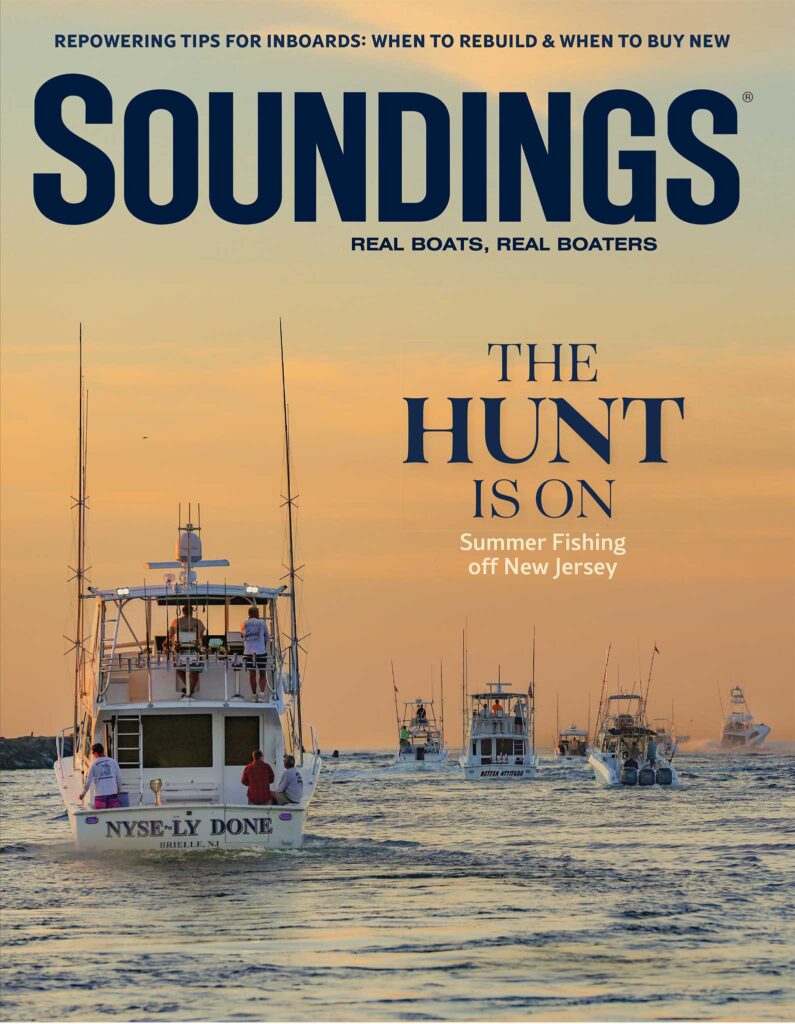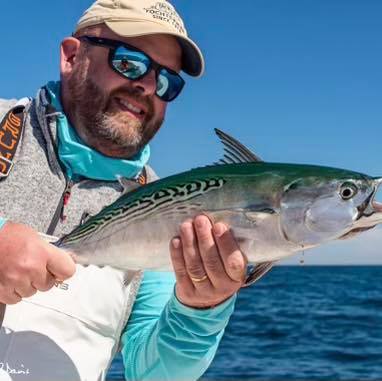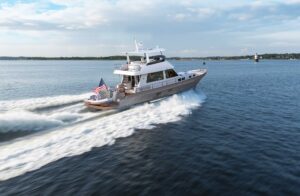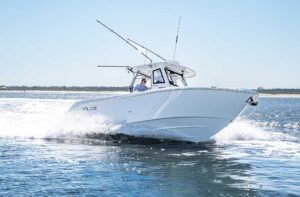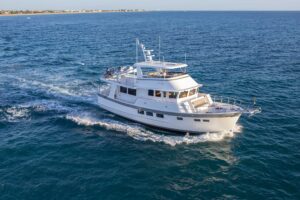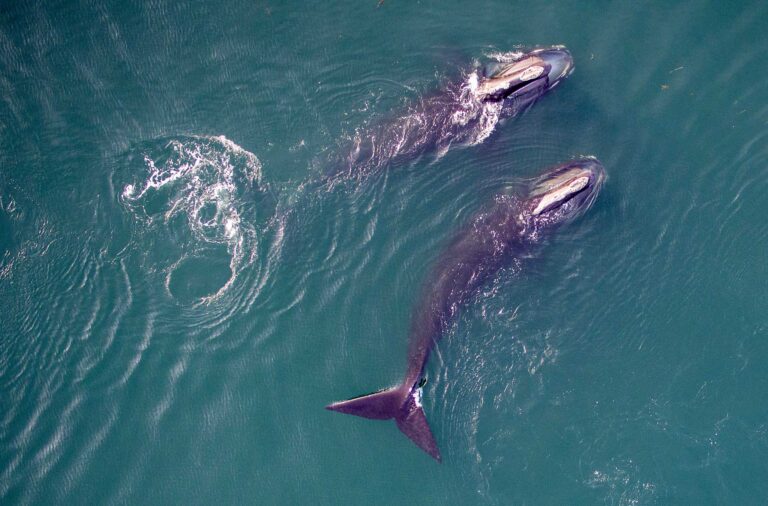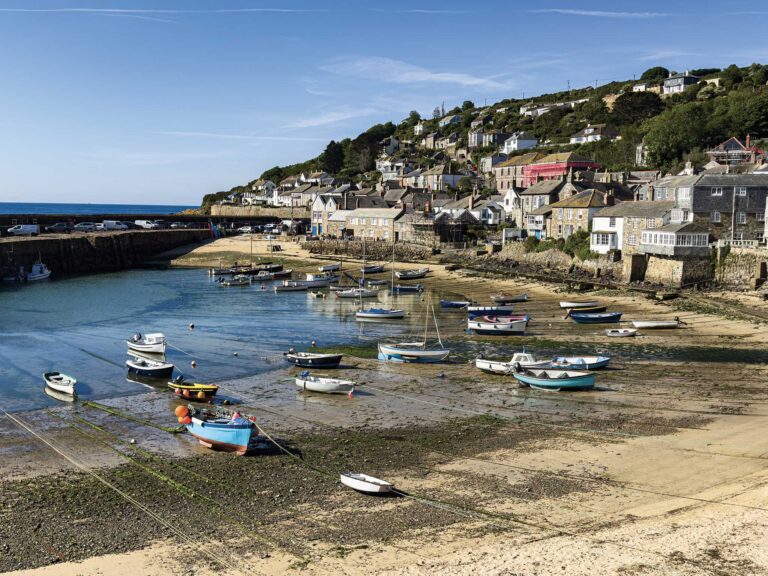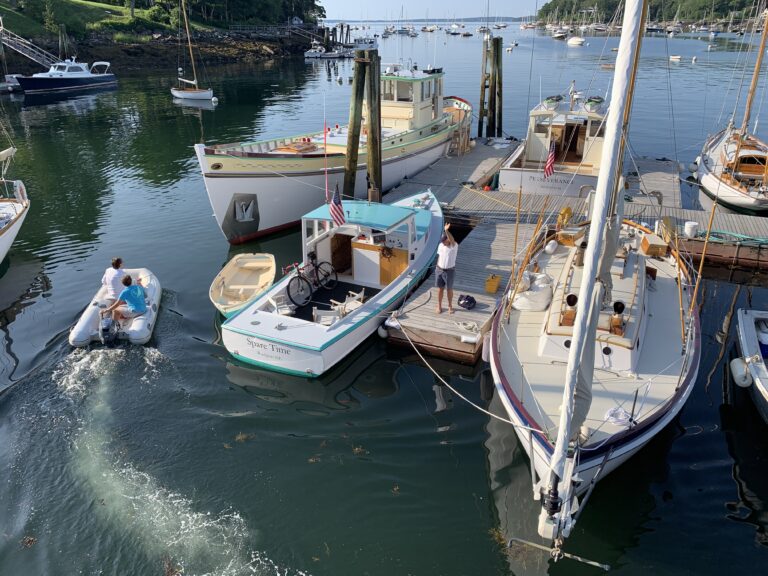If you’ve never heard of Finnish powerboat builder Aquador Boats, well, you’re likely not alone. The nearly 30-year-old brand, owned by parent company Nimbus Boats, splashed on U.S. shores last summer in Annapolis, where its boats will be available through exclusive distribution partner PowerTime. The company also offers fractional ownership opportunities through a franchise boat-sharing arrangement in three additional U.S. locations.
“It’s a great opportunity for folks who want to subsidize ownership costs through a sharing agreement,” Nimbus Boats USA Vice President Justin Joyner said as we hopped aboard Aquador’s 300HT.
From the outside, the 300HT has an angular appearance highlighted by its namesake hardtop (HT), squared-off bow and staggered hullside glass panels. There’s an expansive teak-capped swim platform aft while a large, cushy sunpad dominates the bow area. Some owners may find the side decks a bit tight (as I did), but ample stainless-steel handholds and railings help.
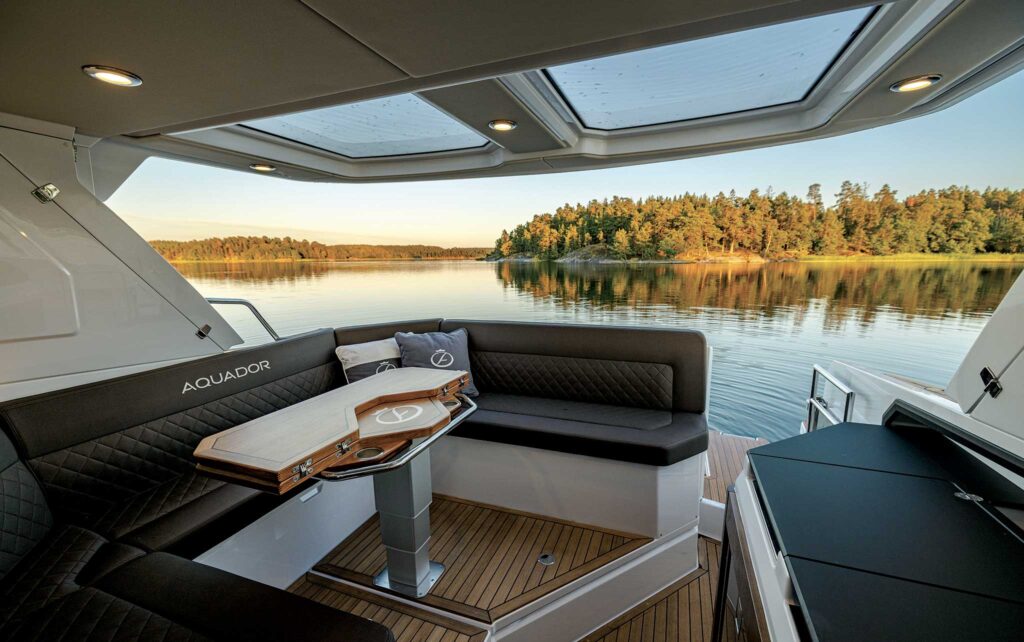
On the main deck is a cozy dayboat-style layout that includes an upholstered, six-person, C-shaped seating area set around a powered, foldable teak dining table. There’s an adjacent portside galley with sink, drawer-style refrigeration and a Kenyon electric grill. I found plenty of soft-close wood cabinet and drawer stowage for cooking gadgets, silverware and dishes.
The helm is a two-person affair with a comfortable, adjustable (fore and aft) bench seat that has a flip-up bolster for each occupant. Buttons, switches and electronics are within easy reach, and visibility is good forward, aft and side-to-side. The dual electric hardtop sunroofs and opening side windows provided a fresh breeze to the helm and companion seat (to port) on what was a swampy-feeling Chesapeake Bay afternoon.
Perhaps the cleverest feature on this main deck is the twin isinglass and canvas panels that slide aft on tracks from the port and starboard hardtop support pillars. Within a couple of minutes, they snap into place and create a fully climate-controlled space that I’m sure many owners will use to extend the boating season, both in spring and fall.
Two steps down a slightly off-center companionway is a handsome, wood-trimmed interior with a V-berth, wet head and guest stateroom, which is situated to starboard, running partially below the helm and bridge deck. There’s a small slice of stand-up room in the guest stateroom next to a hanging locker—just enough for dressing in privacy—and a small dressing bench abaft the V-berth could potentially be used by kids as a sleeping berth. The hullside glass panels let in plenty of light, while an overhead hatch allows for (much appreciated) ventilation.
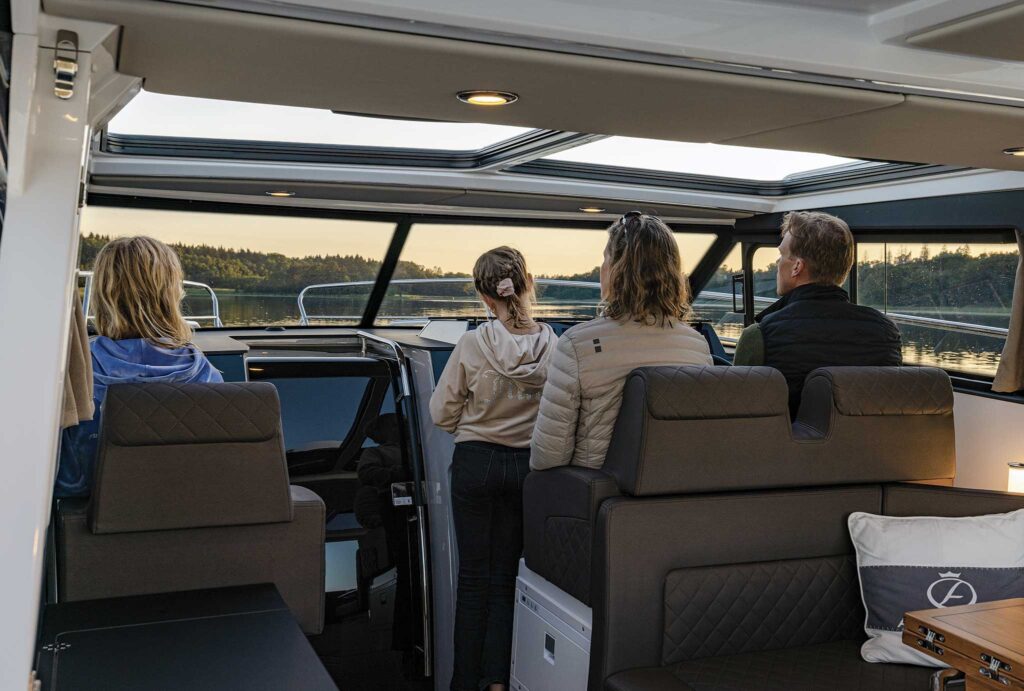
We ran our sea trial out of Annapolis’ Horn Point Harbor, a tightly packed marina off the Severn River that I’ve found great for testing a boat’s low-speed maneuverability. As you’d expect with twin outboards and the standard bow thruster, the 300HT was plenty easy to pilot out of the slip and into the main marina thruway without having to play piling pinball. Engine controls were easy to reach, and steering was light but precise.
This test boat was fitted with a pair of Suzuki DF200s, which were smooth, torquey and quiet. Twin Mercury Verado 200s are an option, as is a single 320-hp Volvo Penta D4-DPI Aquamatic diesel sterndrive.
The mouth of the Severn River can be a washtub of sorts when boat traffic is heavy—and just right for testing a boat’s rough-water mettle—but our weekday sortie encountered calm waters. So, we created our own wakes, which the 300HT hopped over with authority, little fuss and absent the creaks and groans that can make a rough day on the water unpleasant.
The 300HT quickly jumped out of the hole with the throttles laid down and the boat got on a plane with a bit of bow rise, but not so much as to hinder forward visibility.
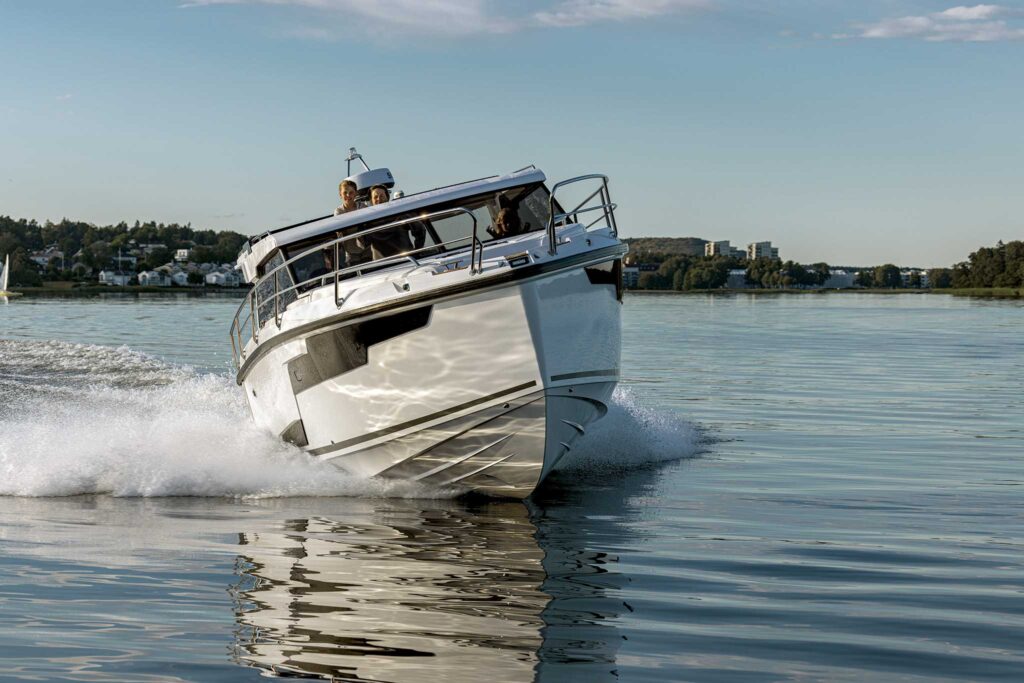
We were able to squeak out around 34 knots of speed when running with the throttles wide open, though Joyner told me the builder is “still messing around with the propeller options.” Most owners will want to cruise the 300HT at around 4000 to 4500 rpm, where the multifunction display on our test boat revealed efficient fuel consumption of between 14 and 20 gallons per hour.
The 300HT is a solid performer built with quality components and thoughtful touches, and her convertible nature and expansive main deck should tempt plenty of potential owners into a sea trial.
LOA: 30’8”
Displ: 9,920 lbs.
Beam: 10’10”
Draft: 1’8”
Fuel: 125 gals.
Water: 375 gals.
Power: (2) 200-hp Suzuki DF200 outboards
August 2025

